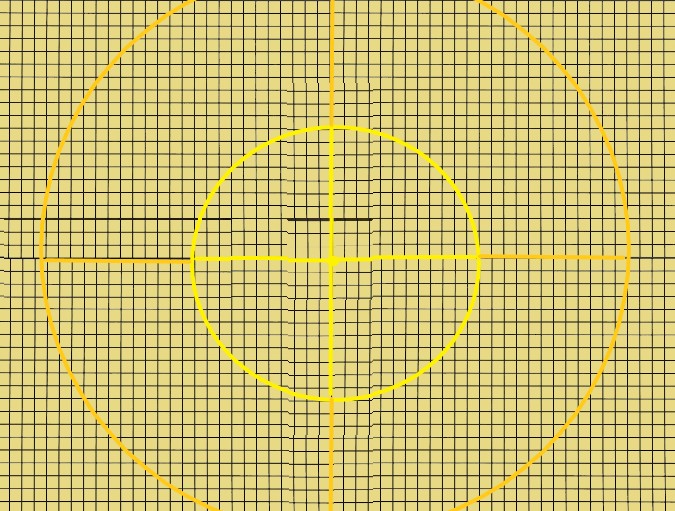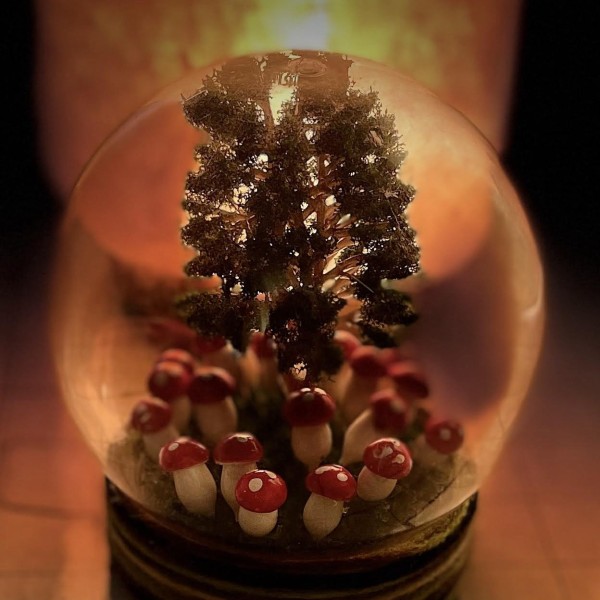If you chose a point on an object you are holding or one that isn’t being worn or carried, the light shines from the object and moves with it. Completely covering the affected object with an opaque object, such as a bowl or a helm, blocks the light.
If any of this spell’s area overlaps with an area of darkness created by a spell of 3rd level or lower, the spell that created the darkness is dispelled.
Casting Time: 1 action
Range: 60 feet
Components: V, S
Duration: 1 hour
School: 3rd-level evocation
Player’s Handbook, pg. 230
Daylight 5e
Daylight — the Dungeons and Dragons spells that frustrates players to no end with its false advertising. But while Daylight might not cause the Vampire-weakening sunlight that players hope to employ, it’s still a fine ol’ utility spell.
We’ll go over just how the spell’s rules work, provide tips for DMs, and give some ideas of how to use Daylight in 5e.
Who Can Cast Daylight in 5e?
The following classes have Daylight on their spell list:
The following subclasses get Daylight for free:
-
Cleric (Light Domain)
-
Druid (Circle of the Land: Grassland)
-
Warlock (The Celestial) (XGtE 54)
What Does Daylight Do in 5e?
Daylight creates a 60-foot radius of bright light emanating from a point, and an additional 60 feet of dim light.

Daylight can also be cast on an object, which will radiate light in the same area of effect. The light will also follow the object. Completely covering the object with a non-transparent object blocks the light.
Finally, Daylight spells magical darkness caused by a spell of 3rd level or lower (like the spell, Darkness) if any part of the spell overlaps with it.
Daylight lasts for one hour and does not require concentration to maintain.
What Are the Rules for Daylight in 5e?
The rules for Daylight in DnD 5e are as follows:
-
Daylight does not create sunlight. For the purposes of vampire’s, drow’s, kobold’s, and other creatures’ sunlight sensitivity, Daylight does not produce actual sunlight — confirmed in this Sage Advice thread.
And in another, JC confirms that “a spell creates sunlight only if its description says so,” which Daylight doesn’t (in comparison to other spells like Sunbeam and Sunburst).
-
An upcast Daylight spell “can dispel only a darkness-creating spell of 3rd-level or lower, regardless of the spell slot used (SAC 17). The Sage Advice Compendium finally ended this player debate once and for all.
Casters can’t duke it out with ever-increasing levels of Daylight vs. Darkness — nothing about upcasting them increases their ability to dispel the opposite effect. Long story short, Daylight always beats Darkness, regardless of upcasting.
-
However, Darkness can be upcast to be undispellable by Daylight. If Darkness is indeed upcast to 4th level, Daylight will fail to dispel it. Darkness also won’t dispel Daylight. If the two areas overlap, Daylight wins (both the bright and dim light it produces).
If the areas move apart again, the magical Darkness returns.

How Do I Use Daylight in 5e?
Here are a few ways to use Daylight in DnD 5e:
-
Dispel the Darkness spell. This is Daylight’s most potent in-combat application. Darkness can be absolutely devastating for your party, giving disadvantage on all attack rolls and the inability to cast spells that require sight.
Daylight is 100% worth the spell slot to remove this hindrance and re-level the playing field.
-
Light up naturally dark places. If someone in your party lacks darkvision, they’re going to need a source of light if they don’t want to be blinded every time your party goes somewhere dark.
While there are plenty of other ways to get this done, Daylight is by far the most effective for lighting up an entire place for an extended duration, ensuring that your group’s human can see all the nooks and crannies of the ancient dwarven city you’re plundering; er, discovering.
-
Counter creatures that rely on dim light or natural darkness. Shadow Demons and Cloakers have disadvantage on attack rolls and perception checks in bright light, and Banderhobbs, Boneclaws, Meazels, Star Spawn Manglers Shadows, and Young Shadow Dragons can try to hide as a bonus action with Shadow Stealth while outside of bright light.
That’s an admittedly small list, but other creatures benefit from darkness in other ways. For instance, any creature that’s relying on shadows or darkness to hide from you will be instantly revealed by a Daylight spell (cover permitting). After all, “you can’t hide from a creature that can see you” (PHB 177).
-
Use as a signal, flare, distraction, etc. There are tons of fun ways to use Daylight’s massive range and brightness. For example, casting it from afar to let your party know that it’s time to attack, retreat, get into postition, etc. is a good long-distance communication method in non-bright places.
It can also be used to be found if you’re separated from your group as a sort of flare. Or, attach it to an arrow, shoot it far away, and watch as the dumb goblins go chasing after the bright thing while you sneak right into their lair.
Similarly, you can cast Daylight on an object and then give it to your party’s tank before entering a dark room, acting as a sort of soft taunt effect that makes enemies more likely to attack them.
-
Use it as a “torch.” The ability to cast Daylight on an object and then cover/uncover it at will is handy — very much like Gandalf with his crystal light staff thing.
Obviously, this isn’t a great option for stealth missions, but if you want to know exactly what’s ahead of you, it’s hard to do better than Daylight. And if something is too far away to see, you can always toss your Daylight faux-torch to whatever you’re trying to get a gander at.
-
Roleplay for bonus effects. In certain roleplaying scenarios, a DM might rule that whipping out such a bright object could have bonus effects (advantages on certain ability checks for intimidation, performance, deception, and persuasion come to mind).
Is Daylight 5e a Good Spell?
No, Daylight isn’t a good spell in DnD 5e — if you’re trying to optimize for combat. Daylight’s main utility is removing the Darkness spell — which isn’t bad, but I mean, Dispel Magic or Counterspell could also get that done (plus a whole lot more in combat).
That being said, Daylight’s utility can be incredible depending on the type of adventures you go on. If you’re constantly delving the deep dark places of the world and your DM is a real stickler for the rules of light, Daylight might come in clutch quite often.
A lot of other things are great about Daylight: it’s massive, has no concentration requirement, lasts for an hour, and can be carried around on an object for continuous utility.
Not to mention that the roleplay potential is fairly significant with a spell like Daylight, especially if you’re building out a solar/radiant character.
Daylight 5e Compared to Sunbeam and Sunburst
The 6th-level spell Sunbeam and 8th-level Sunburst both produce actual sunlight. Sunbeam explicitly states it in the spell description’s final line (“this light is sunlight”) and Sunburst in the first line (“brilliant sunlight flashes”).
These spells are different from Daylight in many other ways, but this draws attention to the explicit lack of sunlight-producing effect from the Daylight spell.
Daylight 5e DM Tips
If your players are peeved that Daylight doesn’t produce sunlight for the purposes of fighting vampires and the like, feel free to buff it so that it does count as sunlight.
Do note, however, that this will be extremely strong in a campaign that features heavily on vampires, as Daylight is also a 1-hour, no concentration, massive area of effect spell — pretty much guaranteeing that a vampire has nowhere to run.
A good balance would be to nerf one of these advantages by shortening the spell, adding a concentration requirement, reducing the size, or some combination of the three.
For my two cents, I don’t think Daylight needs changing. While I agree that it’s unintuitive that a spell called Daylight doesn’t produce passable sunlight to mess with a vampire, the developers balanced it with those other advantages I mentioned above in mind.
And while Daylight might not be the strongest spell in the game, it is situationally very strong for countering an enemy’s Darkness spell.
Simple Daylight 5e Spell Text
Daylight: (3rd-level evocation, 60 feet, 1 hour, V/S) Createa a 60-foot-radius sphere that is bright light and sheds dim light for an additional 60 feet.
May target an object that isn’t being worn or carried; the light shines from the object and moves with it. Completely covering the affected object with an opaque object blocks the light.
If any of this spell’s area overlaps with an area of darkness created by a spell of 3rd level or lower, the spell that created the darkness is dispelled.
![Inflict Wounds 5e [5 Ways To Use The DnD Spell, DM Tips, Rules] dungeons-and-dragons-party-vs-lich-mini](https://www.dndlounge.com/wp-content/uploads/2022/03/dungeons-and-dragons-party-vs-lich-mini-300x194.jpg)
![Leomund's Tiny Hut 5e [7 Ways To Use The DnD Spell, DM Tips, Rules] dnd-5e-party-in-forest](https://www.dndlounge.com/wp-content/uploads/2022/03/dnd-5e-party-in-forest-300x157.jpg)
![Speak With Animals 5e [5 Ways To Use The DnD Spell, DM Tips, Rules] dnd-5e-leucrotta](https://www.dndlounge.com/wp-content/uploads/2022/03/dnd-5e-leucrotta-300x157.jpg)
![Enhance Ability 5e [29 Ways To Use The DnD Spell, DM Tips, Rules] dnd-5e-adventuring-party](https://www.dndlounge.com/wp-content/uploads/2022/03/dnd-5e-adventuring-party-300x225.jpg)